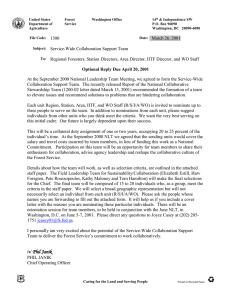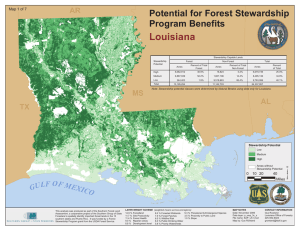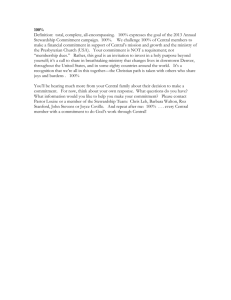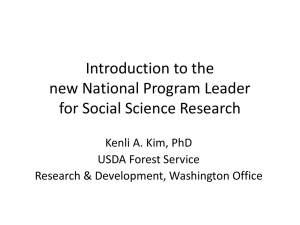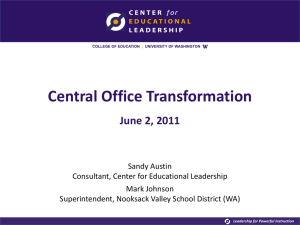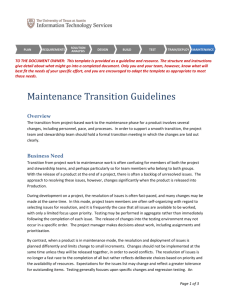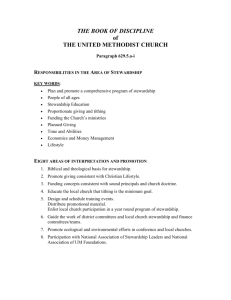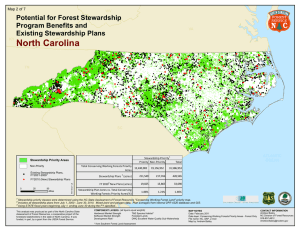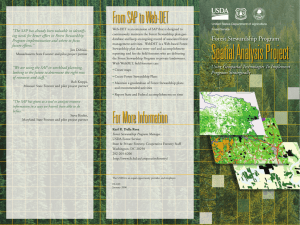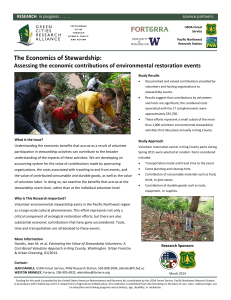Document 10522938
advertisement
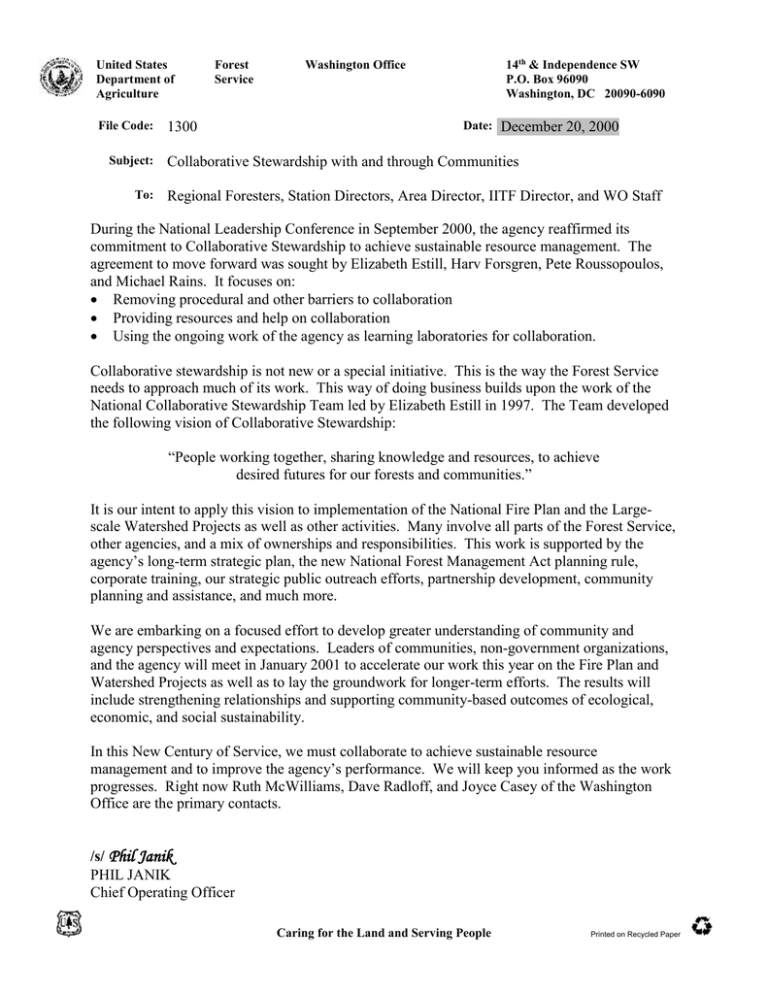
United States Department of Agriculture File Code: Subject: To: Forest Service 1300 14th & Independence SW P.O. Box 96090 Washington, DC 20090-6090 Washington Office Date: December 20, 2000 Collaborative Stewardship with and through Communities Regional Foresters, Station Directors, Area Director, IITF Director, and WO Staff During the National Leadership Conference in September 2000, the agency reaffirmed its commitment to Collaborative Stewardship to achieve sustainable resource management. The agreement to move forward was sought by Elizabeth Estill, Harv Forsgren, Pete Roussopoulos, and Michael Rains. It focuses on: Removing procedural and other barriers to collaboration Providing resources and help on collaboration Using the ongoing work of the agency as learning laboratories for collaboration. Collaborative stewardship is not new or a special initiative. This is the way the Forest Service needs to approach much of its work. This way of doing business builds upon the work of the National Collaborative Stewardship Team led by Elizabeth Estill in 1997. The Team developed the following vision of Collaborative Stewardship: “People working together, sharing knowledge and resources, to achieve desired futures for our forests and communities.” It is our intent to apply this vision to implementation of the National Fire Plan and the Largescale Watershed Projects as well as other activities. Many involve all parts of the Forest Service, other agencies, and a mix of ownerships and responsibilities. This work is supported by the agency’s long-term strategic plan, the new National Forest Management Act planning rule, corporate training, our strategic public outreach efforts, partnership development, community planning and assistance, and much more. We are embarking on a focused effort to develop greater understanding of community and agency perspectives and expectations. Leaders of communities, non-government organizations, and the agency will meet in January 2001 to accelerate our work this year on the Fire Plan and Watershed Projects as well as to lay the groundwork for longer-term efforts. The results will include strengthening relationships and supporting community-based outcomes of ecological, economic, and social sustainability. In this New Century of Service, we must collaborate to achieve sustainable resource management and to improve the agency’s performance. We will keep you informed as the work progresses. Right now Ruth McWilliams, Dave Radloff, and Joyce Casey of the Washington Office are the primary contacts. /s/ Phil Janik PHIL JANIK Chief Operating Officer Caring for the Land and Serving People Printed on Recycled Paper
